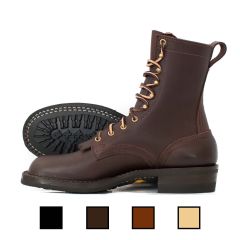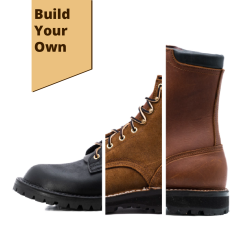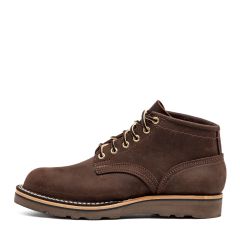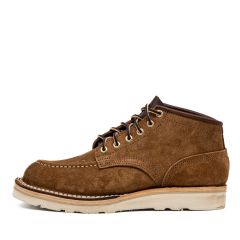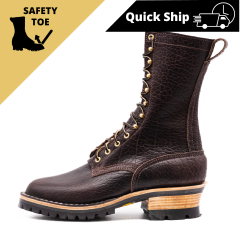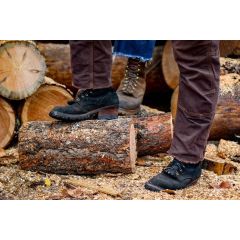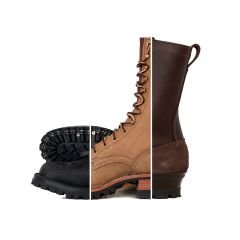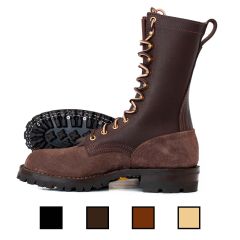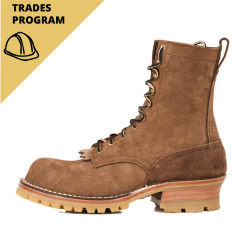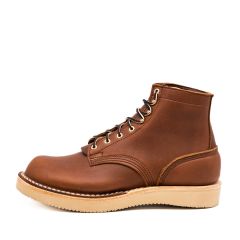Work Boots For Landscaping
Importance Of The Right Footwear For Landscaping
Protection
Selecting the right work boots is not just about comfort; it's about ensuring your feet are shielded from the myriad dangers present in a work environment. Steel-toed boots are particularly crucial for protecting against heavy falling objects and compression, while waterproof or water-resistant boots keep your feet dry in wet conditions, preventing fungal infections and discomfort.
Additionally, some boots offer puncture-resistant soles to safeguard against sharp objects like nails and shards, making them indispensable in preventing injuries that could otherwise sideline you from work.
Comfort
When you're engaged in landscaping or any job requiring long hours on your feet, the importance of comfortable footwear cannot be overstated. Boots designed with ample support and cushioning help distribute your weight evenly, reducing the strain on your feet, ankles, and lower back.
Features such as breathable materials and moisture-wicking linings also contribute to overall foot comfort, ensuring that your feet remain dry and at an optimal temperature regardless of weather conditions, ultimately preventing fatigue and boosting your stamina throughout the day.
Durability
The rugged nature of outdoor work demands footwear that's built to last. Boots crafted from durable materials like leather, equipped with reinforced stitching and high-quality soles, stand up to the rigors of daily wear and tear. The longevity of your boots is not just a matter of economic savings but also consistent safety and comfort.
Investing in boots that can withstand harsh elements, including mud, water, and uneven terrain, means you’re less likely to face the inconvenience and risk of sudden footwear failure at critical moments.
Efficiency
The right pair of work boots contributes significantly to your overall efficiency on the job. Boots with superior traction prevent slips and falls on slippery or uneven surfaces, allowing you to move confidently and safely at work.
This security enables you to concentrate fully on your tasks, without the distraction of navigating safety hazards or discomfort from inadequate footwear. Moreover, features like quick-tie laces or pull-on designs can save time and effort, making it easier to get ready for work or switch shoes as needed, streamlining your workday and enhancing your productivity.
Key Features Of Quality Landscaping Boots
- Durability And Material: Look for landscaping boots made of tough materials like leather with reinforced stitching and waterproof treatments for longevity and protection.
- Safety Toes: Choose boots with steel, aluminum, or composite safety toes to guard against injuries from falling objects in landscaping work.
- Puncture-Resistant Soles: Opt for boots with sturdy soles to prevent punctures from sharp objects like nails or thorns, often featuring a metal midsole plate for added protection.
- Waterproofing: Waterproof boots keep feet dry and healthy in outdoor conditions, preventing bacterial growth and ensuring comfort throughout the day.
- Slip Resistance: Look for boots with slip-resistant soles designed to maintain traction on slick or uneven surfaces common in landscaping work.
- Support And Comfort: Select boots with supportive features like padded insoles, midsoles, and ergonomic footbeds to reduce fatigue and discomfort during long work hours.
- Breathability: Choose boots with breathable materials or linings to regulate foot temperature, keeping feet dry and comfortable in various weather conditions.
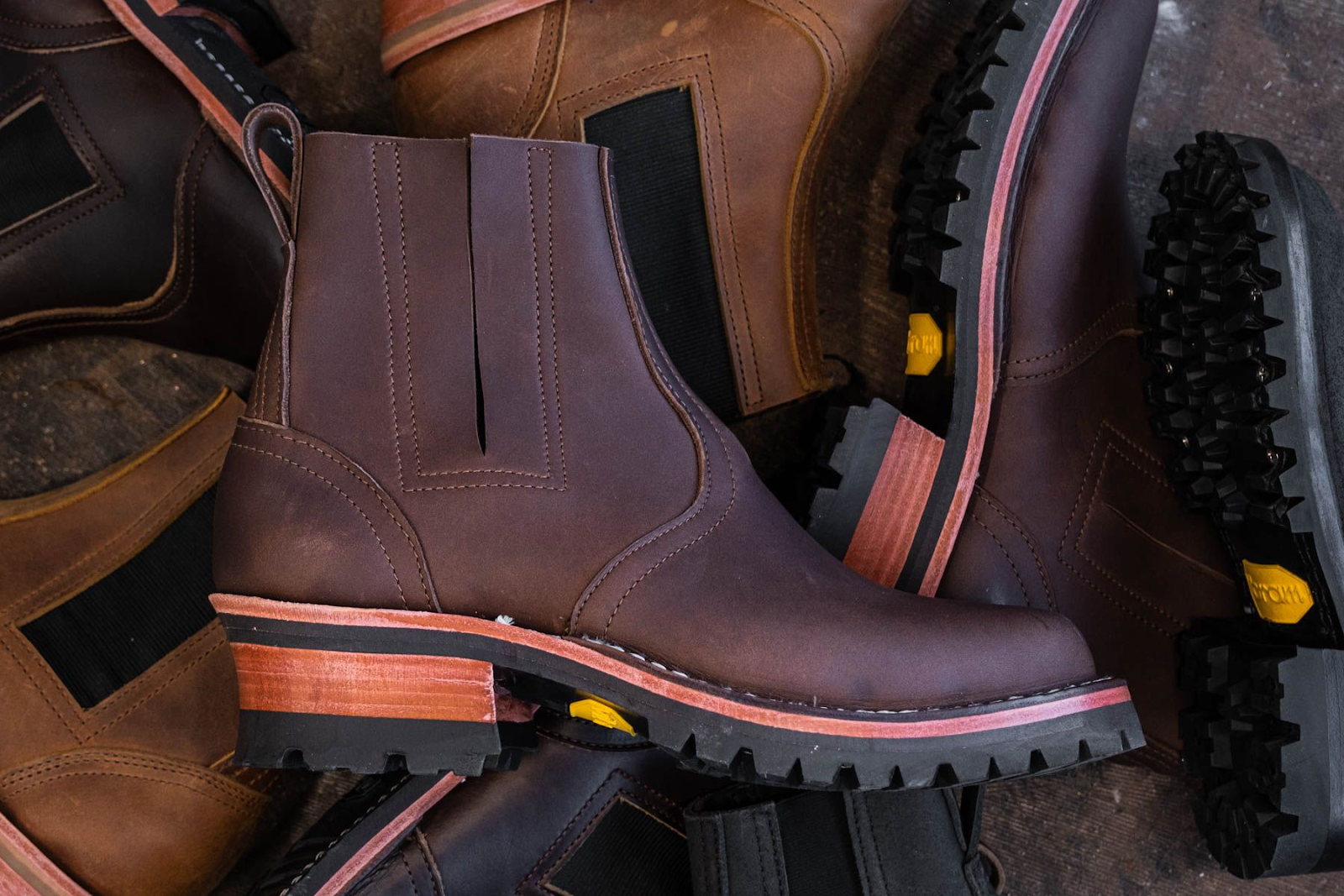
Protective Elements In Landscaping Boots
- Toe Caps: The toe cap is crucial for protection against falling objects. Options include steel, aluminum, or composite materials.
- Puncture-Resistant Soles: Hard soles prevent sharp objects from piercing through the boot, enhancing safety on hazardous terrain.
- Slip-Resistant Outsoles: Deep treads offer stability on wet and uneven surfaces, reducing the risk of slips and falls.
- Ankle Support: Boots with ankle support prevent sprains and twists on uneven landscapes.
- Waterproof And Breathable: Waterproof boots keep feet dry in wet conditions. Breathable materials allow moisture to escape, maintaining foot health.
Comfort Matters: Cushioning And Support for Long Days
Cushioning
Choose Nicks Boots work boots with good cushioning to absorb shock and provide a soft landing when walking on hard surfaces. Look for thick, padded insoles or integrated cushioning systems for even weight distribution and joint impact reduction.
Support
Support structures in work boots ensure proper foot alignment and stability. Features like reinforced heel cups, midsole shanks for arch support, and ankle support help prevent injuries and maintain comfort during long hours on your feet.
Breathable Materials
Opt for work boots made with breathable materials like nylon mesh panels and moisture-wicking linings to keep your feet dry and cool. Antimicrobial or odor-control technologies can also maintain foot freshness even after extended wear, especially in warmer weather.

Waterproofing Boots For Landscaping
When it comes to work boots for landscaping, the debate around the need for waterproofing often surfaces. Some argue that waterproofing your work boots for landscaping is an essential feature, while others deem it ultimately overrated. To understand its general importance, let’s explore the pros and cons of waterproofing in landscaping boots.
- The Case For Waterproofing: Landscaping doesn't pause for bad weather. Rain, wet grass, and muddy conditions are common scenes in outdoor work environments. Waterproof boots are designed to keep feet dry in these conditions, which is vital for multiple reasons:
- Comfort: Wet feet are uncomfortable. They can lead to blisters, chafing, and an overall miserable workday experience.
- Health: Constantly wet conditions can contribute to foot problems such as athlete's foot or other fungal infections.
- Productivity: Knowing that your feet will stay dry regardless of conditions can provide peace of mind, allowing you to focus on the task at hand rather than discomfort. Technologies and waterproof leather aim to provide a barrier against water while still allowing the feet to breathe. This is key in maintaining a comfortable interior environment within the boot, even when conditions outside are less than favorable.
- Finding The Middle Ground: The decision on whether waterproofing is essential or overrated boils down to the specific needs of the landscaping professional and the conditions they frequently encounter. For those who often work in wet conditions or areas with high moisture levels, waterproofing is undoubtedly a valuable feature. It provides an added layer of protection and comfort that can make a significant difference in daily work life.
However, for individuals working in drier climates or those prioritizing maximum breathability, the focus might shift towards boots that offer superior ventilation, possibly foregoing waterproofing for enhanced air circulation.
Ultimately, selecting the right work boots for landscaping is about balancing the various features—waterproofing being one among many—to meet the unique demands of the work environment and personal preferences. Considering factors such as climate, job site conditions, and personal comfort will guide you in deciding whether waterproofing in work boots is essential for your landscaping tasks or an overrated feature that can be skipped.
Frequently Asked Questions
What are the best work boots for landscaping?
The best work boots for landscaping are those that offer durability, support, and protection in various outdoor conditions. It's essential to look for boots with robust construction, adequate ankle support, and outsoles that provide excellent traction on uneven terrains.
Why are waterproof boots important for landscaping work?
Waterproof boots are crucial for landscaping due to the outdoor nature of the work, which often exposes workers to wet conditions. Waterproof boots help keep feet dry, which is important not only for comfort but also to prevent blisters and fungal infections. Dry feet are happy feet, especially in professions requiring long hours outdoors.
How do steel toe boots benefit landscapers?
Steel toe boots offer the highest level of protection against heavy falling objects, sharp tools, and machinery often used in landscaping. This feature is essential for preventing injuries to the feet, making steel toe boots a wise choice for landscapers prioritizing safety on the job site.
How important is slip resistance in landscaping boots?
Slip resistance is incredibly important in landscaping boots due to the varied and often slippery surfaces encountered, such as wet grass, muddy ground, and slick pavement. Boots with slip-resistant soles help prevent falls and injuries, making them a crucial feature for the safety and efficiency of landscaping professionals.
What's the difference between composite toe and steel toe boots?
The primary difference between composite toe and steel toe boots lies in the materials used for the toe cap. Composite toe boots use materials like fiberglass, carbon fiber, or plastic, making them lighter and more comfortable for long periods. Steel toe boots, however, offer more robust protection due to the durability of steel. Composite toe boots also have the advantage of being non-conductive, making them safer for working in environments where electrical hazards exist.
How can I ensure my work boots are comfortable for long hours?
Ensuring your work boots are comfortable for long hours involves selecting boots with ample cushioning, proper arch support, and a breathable lining. Additionally, choose boots that fit well and provide enough room for your toes to move freely. Insoles or custom orthotics can also enhance comfort and support.
Are there specific boots for summer landscaping work?
Yes, there are boots specifically designed for summer landscaping work. These boots typically feature lighter materials, breathable linings, and moisture-wicking technology to keep feet cool and dry in hot weather. Look for boots with mesh panels or ventilation holes for added airflow.
How can I protect my work boots from mud and water?
Protecting your work boots from mud and water involves regular maintenance, such as cleaning them after each use and applying a waterproofing sealant or spray. Additionally, storing boots in a dry, ventilated area helps prevent moisture buildup, which can lead to deterioration over time.
Is it worth getting insulated work boots for landscaping?
Getting insulated work boots is worth considering if you work in cold weather conditions or during the winter months. Insulated boots provide extra warmth, keeping feet comfortable and preventing cold-related discomforts such as frostbite. However, for warmer climates or summer work, insulated boots may be too warm and lead to overheating.
How do I choose the right size work boots for landscaping?
Choosing the right size work boots involves more than just knowing your shoe size. Consider the thickness of the socks you'll be wearing and whether the boots offer enough space for your toes. It’s often helpful to try them on later in the day when your feet are at their largest. Look for boots that fit snugly but comfortably, without causing tightness or pressure points.
